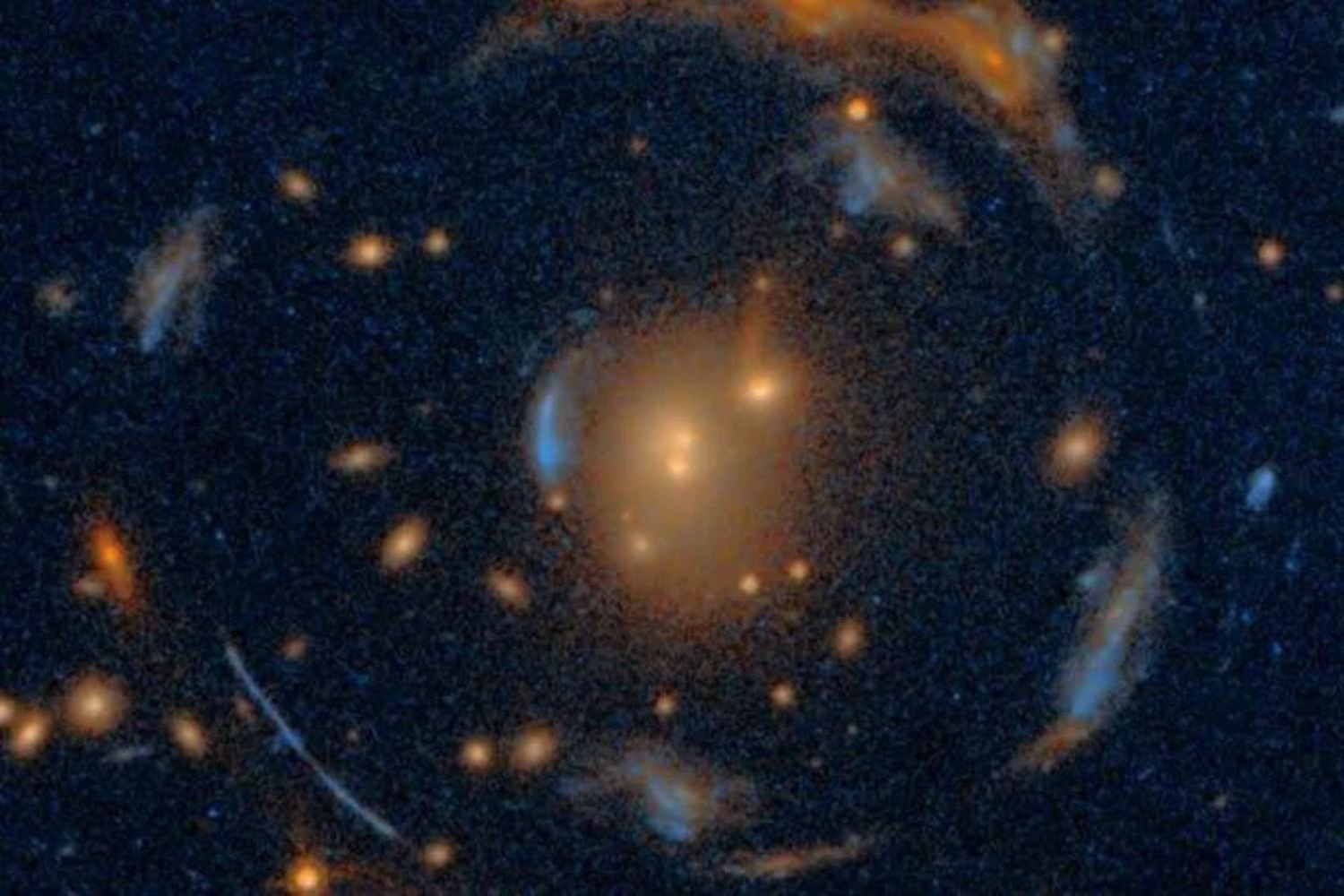Astronomers unveil Einstein’s predicted exquisite cosmic microscope

The universe is vast and full of objects and structures so large that their mass causes light to bend as it passes through, sharpening the photons emanating from more distant light sources. These “gravitational lenses” can reveal very ancient parts of the universe that would otherwise be blurry and unclear to observe from Earth.
Now, a team of researchers from Lawrence Berkeley National Laboratory has found a configuration of galaxies that they consider to be an especially exquisite gravitational lens. The lens – which they named Carousel Lens – consists of seven background galaxies around a central, slightly less distant galaxy cluster, and other objects acting as lenses on the periphery.
It is “a chance alignment of several galaxies that crosses a line of sight spanning much of the observable universe,” explained David Schlegel, an astrophysicist at Berkeley Lab and co-author of the work. “A discovery like this alignment is like finding a needle in a haystack. And finding all of this is like finding eight needles precisely in line within that haystack.”
What is it used for?
Gravitational lenses are used to see ancient sources of light such as the oldest known star or a supernova that reappeared in the sky several times as its curved light took different paths towards Earth. The unique arrangement of the Carousel Lens makes it a particularly strong gravitational lens.
The team created a computerized model of the lens and calculated the approximate distances of the galaxies. The cluster is about five billion light-years from Earth, and its seven galaxies are between 2.6 and 7 billion light-years further, making a total of 12 billion light-years into the past, according to the study published last week in The Astrophysical Journal.
“Through the lens, the different images of each of the background galaxies appear in nearly concentric circular patterns around the less distant lens, as if it were a carousel,” said Xiaosheng Huang, a physicist and astronomer at the University of San Francisco and co-author of the study. “It is an unprecedented discovery, and the model we generated shows high probabilities of allowing us to measure the properties of the cosmos, such as dark matter and dark energy.”
Some gravitational lenses form nearly perfect circles of light in the sky. In this case, a symmetrical mass distribution (including dark matter) is indicated by the lens, 95% of the universe is made up of dark matter and dark energy. We have only observed 5% of everything so far.




